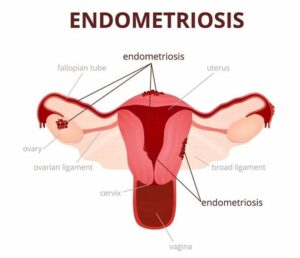



On the one hand, systemic inflammation and stress caused by endometriosis can lead to gut issues, but on the other hand, a sub-optimal gut can cause a number of unpleasant symptoms. The relationship between endometriosis and gut health, however, is complicated simply because there are a multitude of factors that can influence the health of your gut. When it comes to gut health, virtually ALL endobabes at some point or another experience issues and imbalances with their gut resulting in bloating, pain, diarrhea, nausea, acid reflux, loose stools - the list goes on and on.

Applying a heating pad to the abdominal area can also create a soothing effect.Many women living with endometriosis are quick to assume that stomach pain, bloating and other gastrointestinal upsets, are just par for the course with endo. Complementary therapies such as yoga, meditation, mindfulness, and pelvic floor physiotherapy can help reduce pain symptoms. Effective management of pelvic pain can offer some relief. For example, avoiding dairy, wheat-based foods, lentils, and garlic may minimize abdominal bloat and help reduce endo belly.Īdditionally, adding magnesium, vegetables high in vitamin B, fiber, and iron to the diet, as well as drinking four to eight glasses of water per day may help reduce endo belly.Įndo belly results in extreme pain around the abdomen and pelvic region. So, avoiding foods that can potentially result in these conditions may also be helpful. SIBO and gas accumulation can result in endo belly. Then, they are each gradually reintroduced to see which ones are causing trouble so as to avoid them henceforth. A FODMAP diet works by first stopping the intake of certain foods (high FODMAP foods). A low FODMAP diet may also help.įODMAP is short for fermentable oligosaccharides, disaccharides, monosaccharides, and polyols. Switching to an anti-inflammatory, gluten-free diet and reducing consumption of caffeine, alcohol, processed foods, or refined sugars can ease endo belly. If surgery is not an option, hormone therapies such as progestin-only pills, combined oral contraceptives, or gonadotropin receptor antagonists can help manage the symptoms of endometriosis. Laparoscopic excision surgery is the gold standard in endometriosis treatment. Managing the symptoms of endometriosis can help reduce the endo belly. Symptoms of endo belly usually subside within 24 to 48 hours of onset. Some other signs of endo belly include a tight belly that feels rock hard, debilitating pelvic pain, and flare-ups when wearing tight clothes. Research has shown that there may also be an association between endometriosis and autoimmune diseases such as Celiac disease, Sjogren’s syndrome, and rheumatoid arthritis that contributes to endo belly in some patients. What causes endo belly?Įndo belly can occur due to several reasons including inflammation caused by the growth of endometrial tissue in the abdomen (endometriosis), small intestinal bacterial overgrowth (SIBO), or an accumulation of gas. Understanding and managing endo belly is important to reduce pain and improve quality of life. However, with endo belly, the severity in bloating and abdominal girth changes according to the menstrual cycle. It is often misdiagnosed as irritable bowel syndrome (IBS) due to similarities in symptoms. Endo belly is a term that refers to the uncomfortable bloating that is common among patients with endometriosis.


 0 kommentar(er)
0 kommentar(er)
